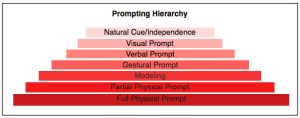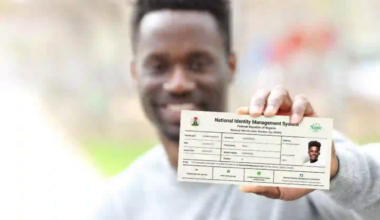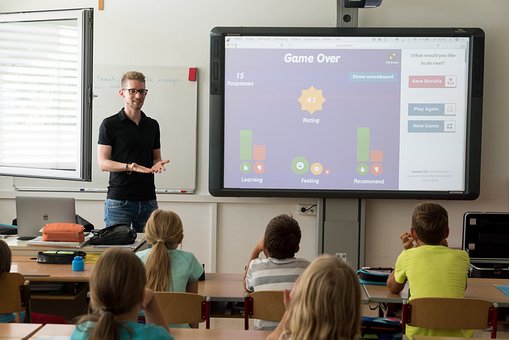On this page is a detailed guide on prompting strategies used in naturalistic teaching approaches, and if that’s what you are looking for, then you’re on the right page. Keep reading.
Naturalistic teaching approaches are methods used to facilitate the learning and development of children with disabilities, particularly those with autism spectrum disorder (ASD).
These approaches prioritize a child’s interests, strengths, and abilities and involve the use of everyday routines and activities to teach new skills. One of the critical components of naturalistic teaching approaches is the use of prompting strategies.
Here in this post, I together with you will be exploring the different prompting strategies used in naturalistic teaching approaches. Let’s get started
>> See This Suggestion: Action Research in Reading Comprehension To Improve Reading
Table of Contents
What is Prompting?

Prompting is a teaching strategy that involves providing cues or hints to help a child learn a new skill. Prompting can take many forms, such as verbal cues, visual cues, or physical prompts. The goal of promotion is to help a child move from a less proficient level of performance to a more competent level of performance. Prompting can be used to help a child initiate a task, complete a task, or respond to a question or request.
Check out: What are the Most Successful Reading Programs for Struggling Students
Types of Prompts
Verbal Prompts
Verbal prompts involve using words or phrases to guide a child’s behavior. Verbal prompts can be direct or indirect. Direct prompts involve telling a child exactly what to do or say. Indirect prompts involve giving a child a hint or clue to help them figure out what to do or say. Verbal prompts can also be used to encourage a child to use language. For example, a teacher might ask a child to repeat a word or phrase to help them develop their communication skills.
Visual Prompts
Visual prompts involve using pictures or symbols to guide a child’s behavior. Visual prompts can be used to help a child understand what they are supposed to do or to provide them with a visual reminder of the steps involved in completing a task. Visual prompts can be particularly helpful for children who have difficulty with verbal communication.
Gestural Prompts
Gestural prompts involve using hand signals or other physical cues to guide a child’s behavior. Gestural prompts can be used to prompt a child to engage in a behavior or to indicate that they are doing something incorrectly. For example, a teacher might use a hand gesture to prompt a child to raise their hand during a classroom discussion.
Check also: What are the Most Successful Reading Programs for Struggling Students
Model Prompts
Model prompts involve demonstrating the behavior or skill that a child is supposed to learn. Model prompts can be particularly effective for children who learn best by observing others. For example, a teacher might demonstrate how to tie a shoe and then ask the child to try it themselves.
Physical Prompts
Physical prompts involve physically guiding a child to perform a task or behavior. Physical prompts can be used to help a child initiate a task, complete a task, or respond to a question or request. Physical prompts can be faded over time as a child becomes more proficient in a particular skill.
Prompting Strategies in Naturalistic Teaching Approaches
prompting strategies used in naturalistic teaching approaches are based on the principles of applied behavior analysis and emphasize the use of prompting strategies to teach new skills. Naturalistic teaching approaches prioritize a child’s interests, strengths, and abilities and use everyday routines and activities as opportunities for learning. Here are some of the prompting strategies used in naturalistic teaching approaches:
Read more: 5 Most Successful Reading Programs For Your Child
Time Delay Prompts
Time delay prompts involve introducing a delay between the presentation of a stimulus and the prompt to respond. For example, a teacher might present a toy car to a child and then wait a few seconds before asking them to say “car.” Time delay prompts are used to encourage a child to initiate a response independently and it is one of the most popular prompting strategies used in naturalistic teaching approaches.
Graduated Guidance Prompts
Graduated guidance prompts involve using physical prompts to guide a child’s behavior. The level of physical support provided is gradually reduced over time as the child becomes more proficient in the skill. Graduated guidance prompts are used to help a child acquire a new skill and then fade the physical support as the child becomes more independent.
See also: Best Guide To Summarizing Reading Strategy
Incidental Teaching Prompts
Incidental teaching prompts involve using the child’s natural interests and activities as opportunities for learning. The teacher or therapist observes the child and then prompts them to engage in a particular behavior or skill related to their interests. For example, if a child is playing with blocks, the teacher might prompt them to count the blocks or sort them by color.
Mand-Model Prompts
Mand-model prompts are another prompting strategy used in naturalistic teaching approaches that involve using a child’s request (mand) for an item or activity as a prompt for them to engage in a particular behavior or skill. For example, if a child asks for a toy car, the teacher might use that request to prompt the child to say “car” or to label the color of the car.
Incidental Motor Learning Prompts
Incidental motor learning prompts involve using physical prompts to guide a child’s motor movements during play or other activities. The goal is to help the child learn and refine motor skills while engaging in activities they enjoy. For example, a teacher might use a physical prompt to help a child swing a bat during a game of baseball.
Read also: What Are the strategies for teaching social studies [ 10 Best Ways]
Benefits of Naturalistic Teaching Approaches and Prompting Strategies
Naturalistic teaching approaches and prompting strategies have several benefits for children with disabilities, particularly those with ASD. Some of the benefits include:
- Individualized Instruction: Naturalistic teaching approaches prioritize a child’s interests, strengths, and abilities, and provide individualized instruction that is tailored to their needs.
- Increased Engagement: By using everyday routines and activities as opportunities for learning, naturalistic teaching approaches increase a child’s engagement and motivation to learn.
- Generalization of Skills: Because naturalistic teaching approaches use everyday activities as opportunities for learning, children are more likely to generalize the skills they learn to other settings and situations.
- Parent Involvement: Naturalistic teaching approaches involve parents in the learning process, providing them with strategies to use at home to support their child’s development.
- Fading of Prompts: Prompting strategies used in naturalistic teaching approaches are designed to be faded over time as a child becomes more proficient in a particular skill, leading to increased independence and self-regulation.
Also see: The 5 Best Methods for Teaching Online Students
Conclusion On Prompting Strategies Used in Naturalistic Teaching Approaches
Naturalistic teaching approaches and prompting strategies are effective methods for teaching new skills to children with disabilities, particularly those with ASD.
These approaches prioritize a child’s interests, strengths, and abilities and use everyday routines and activities as opportunities for learning. By using a variety of prompting strategies, including verbal, visual, gestural, model, and physical prompts, teachers and therapists can help children acquire new skills and become more independent and self-regulated over time.
FAQ
Do naturalistic teaching methods employ prompting techniques?
Naturalistic teaching methods employ the following prompting techniques: Adapt to the child’s replies. Which of the following best justifies performing a reinforcer assessment prior to putting a naturalistic intervention into practice? should be aware of the reinforcers and potential intervention items to have on hand.
What are naturalistic instructional techniques?
In order to encourage motivation, functional relationships, generalization, and maintenance for kids with autism spectrum disorder, naturalistic teaching techniques are used in treatment. These settings are often found in the natural environment.
What do prompting strategies entail?
Physical Guiding or Prompting
Gestural. Make gestures with your hands, arms, or even eyes that the youngster will interpret as the desired behavior. Your youngster can figure out what is expected of them using this kind of prompt. The youngster should be directed to choose or use the object by pointing, tapping, or staring at it.






